After a hurried breakfast at the Starbucks in Nagano station, we hopped on a Limited Express (read, slow, i.e., not a Shinkansen) train to Nakatsugawa, which took 2 hours to travel the 211km. Nice thing about it, though, was the huge windows, so we could get a good view of the landscape along the way.
When the train arrived a few minutes late, uncharacteristic for Japan, we had to chase down our bus, which was just leaving the station. Luckily Nakatsugawa is a small town, so rushing onto the street after a bus didn’t cause any distress at all. We thanked the driver when we got on board and then sat at the window for the half-hour long journey up the hillside to Magome, the post road town where we started our hike in the Kiso Valley.
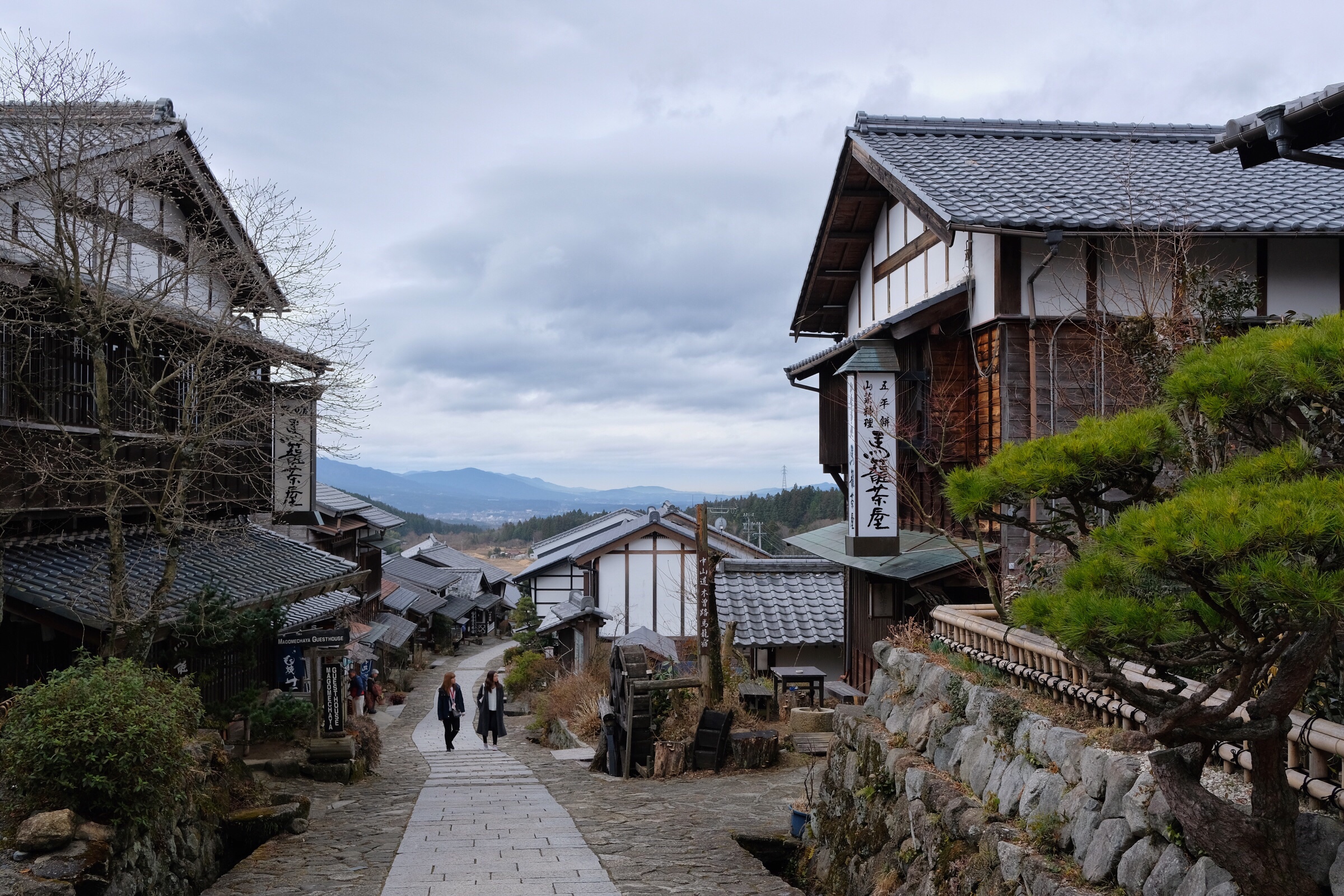
Magome is one of several towns that has been preserved and renovated over the last century to maintain its Edo period historical appeal. The houses along the main pedestrian-only road in town are made of wood in the style from several hundred years ago, with sliding wooden doors and paper screens, sloped roofs with clay tiles and ornate eaves troughs. The stone path led up through the town to a viewpoint where we stopped for a packed sandwich lunch and some photos of the valley.
Then, it was an uphill climb for the first km or so of the 8km Hiking Course, called the Nakasendo trail, which used to be the route through the Kiso Valley connecting Tokyo and Kyoto during the Edo period.
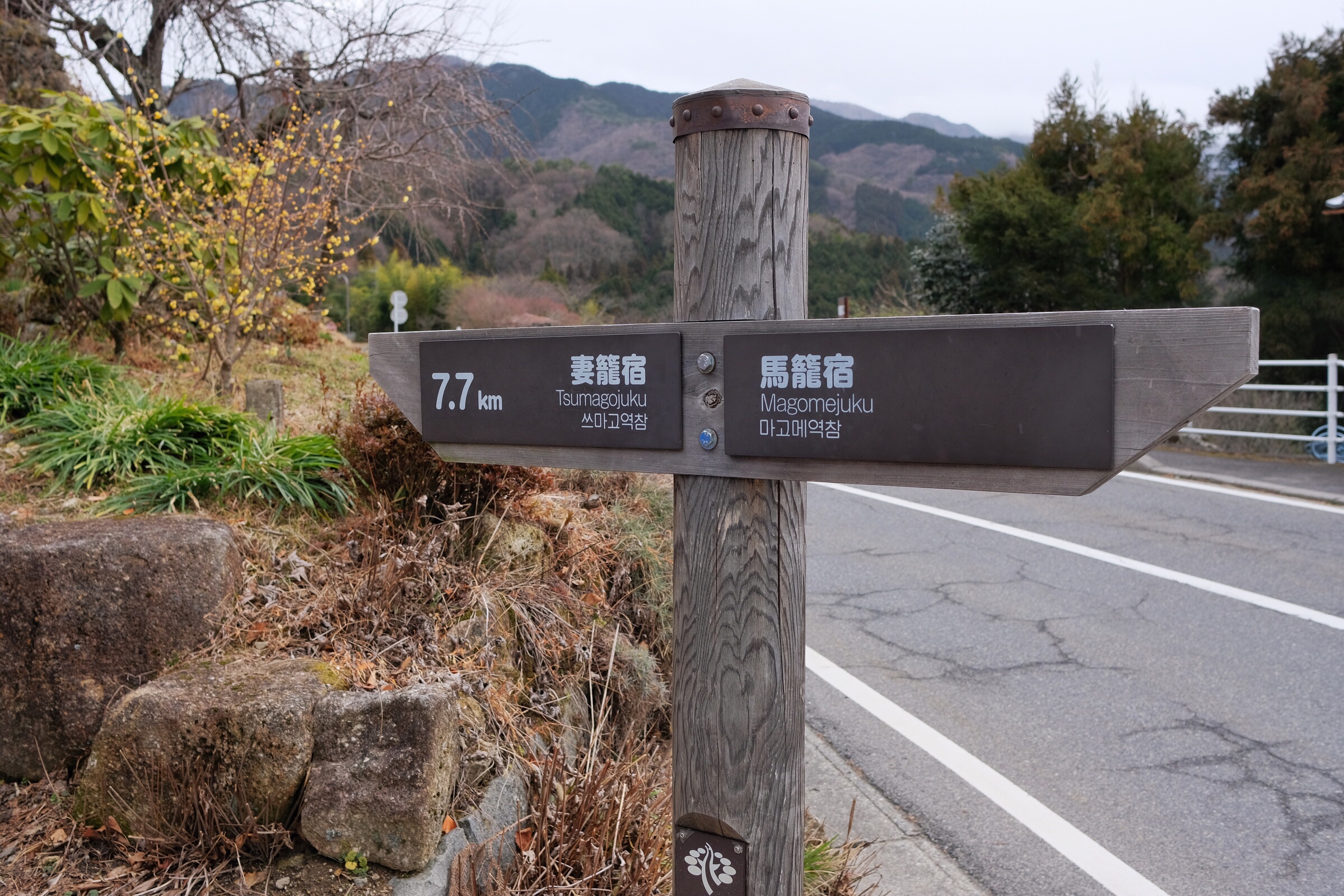
Most of the Course is through lush forest, with the path alternating between stones, gravel, and soil. Several times per km, we rang brass bells posted along the trail to scare away any nearby bears, and we had a lot of fun ringing them as loud as we could.
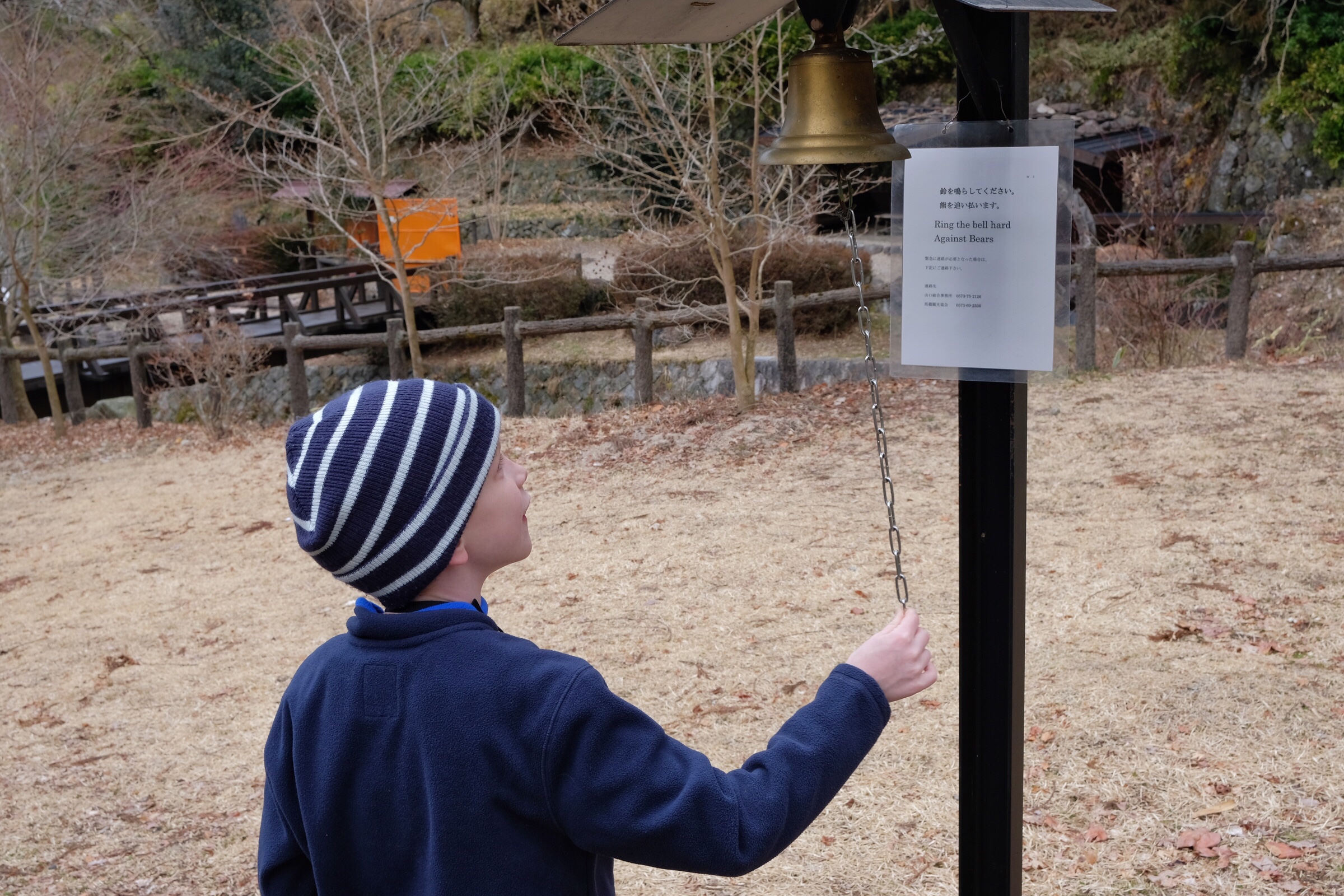
We crossed over lots of rivers, streams and waterfalls, with the trail often edging along steep downward slopes. It started to rain about 4km into the hike, but we had plenty of rain gear to keep us dry (thank you, MEC!).
I lost count of the number of times I said, out loud to no one in particular, “This is so beautiful,” or, alternately, “So pretty!” The views of the forested hills, deep verdant valleys, small farms and sweet villages are incredible.

It took us two and a half hours to hike the entire Course and we arrived in the post town of Tsumago by 3:30.
Here we stayed in Ryokan Matsushiroya, a traditional Japanese guesthouse, where we slept on tatami mats, under warm comforters and heated pillows at our feet. We were each given a pair of slippers to use to walk around the house, except when we stepped into our room or the private dining room where we ate dinner and breakfast, where we had to take those off and walk around in just our socks.
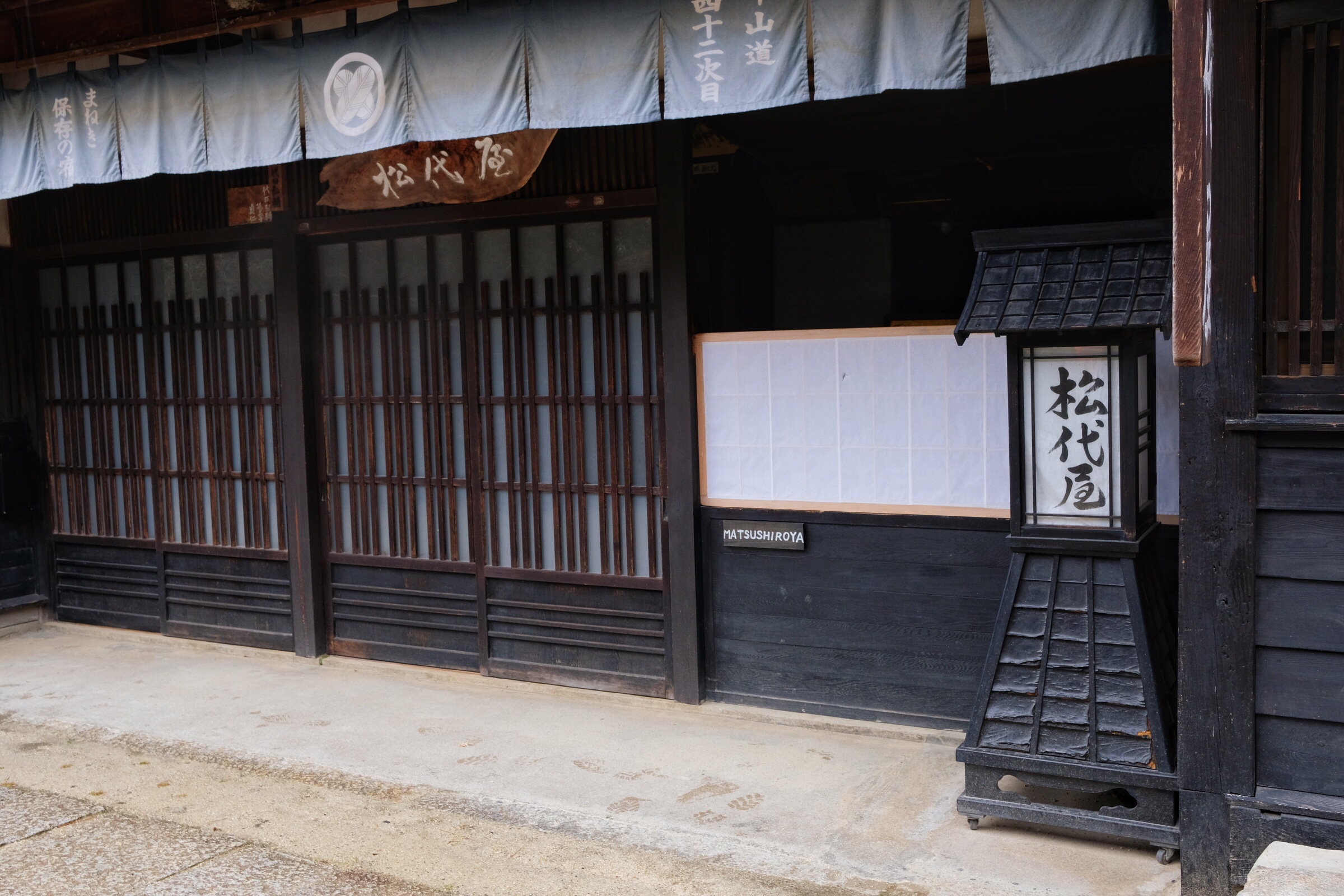
The night was rainy and super windy, which shook the wood and paper walls of our rooms so much we wondered if they would survive, but of course, they did.
Dinner and breakfast were arranged intricately, with many, beautiful, small and dainty plates. Most were fish dishes, which were a little wasted on us, but what we did eat was excellent.
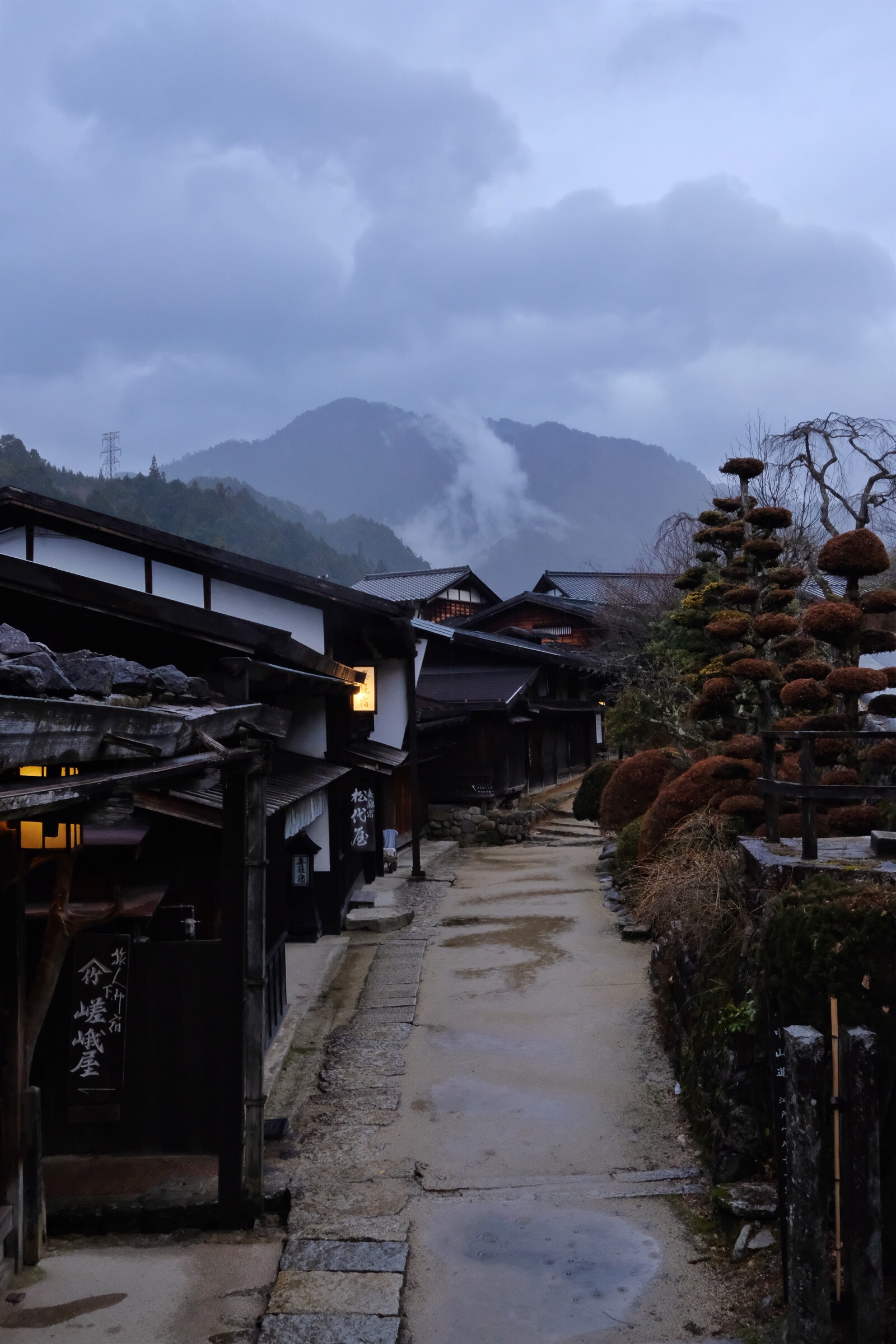
The next day, we visited a small community museum, where we got a personally guided tour through an authentic and original house from the Edo period, which was fascinating. Our guide was very proud to tell us about the functions of each of the rooms, who would use them (family, vs security guards, vs special guests) and the fact that the Emperor of Japan visited the house for 30 minutes many years ago.
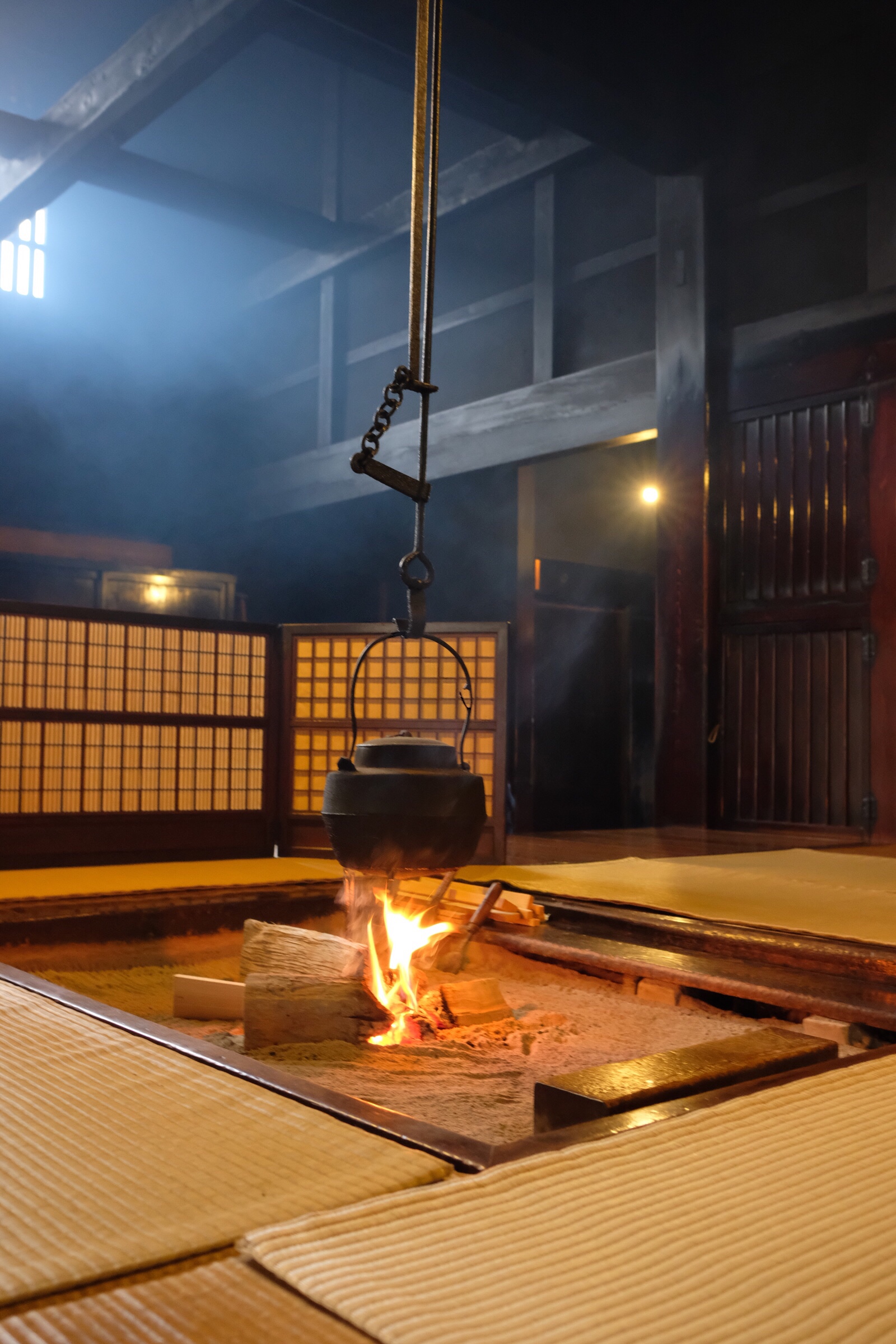
We toured two other rooms filled with art and artifacts on our own and with lightening speed because we had a 4 km hike ahead of us to get to the train station in nearby Nagiso for our 11am Limited Express train back to Nagano.

This shorter part of our hiking experience was just as beautiful as the previous day’s and we were very happy we decided to walk rather than take the bus into town.
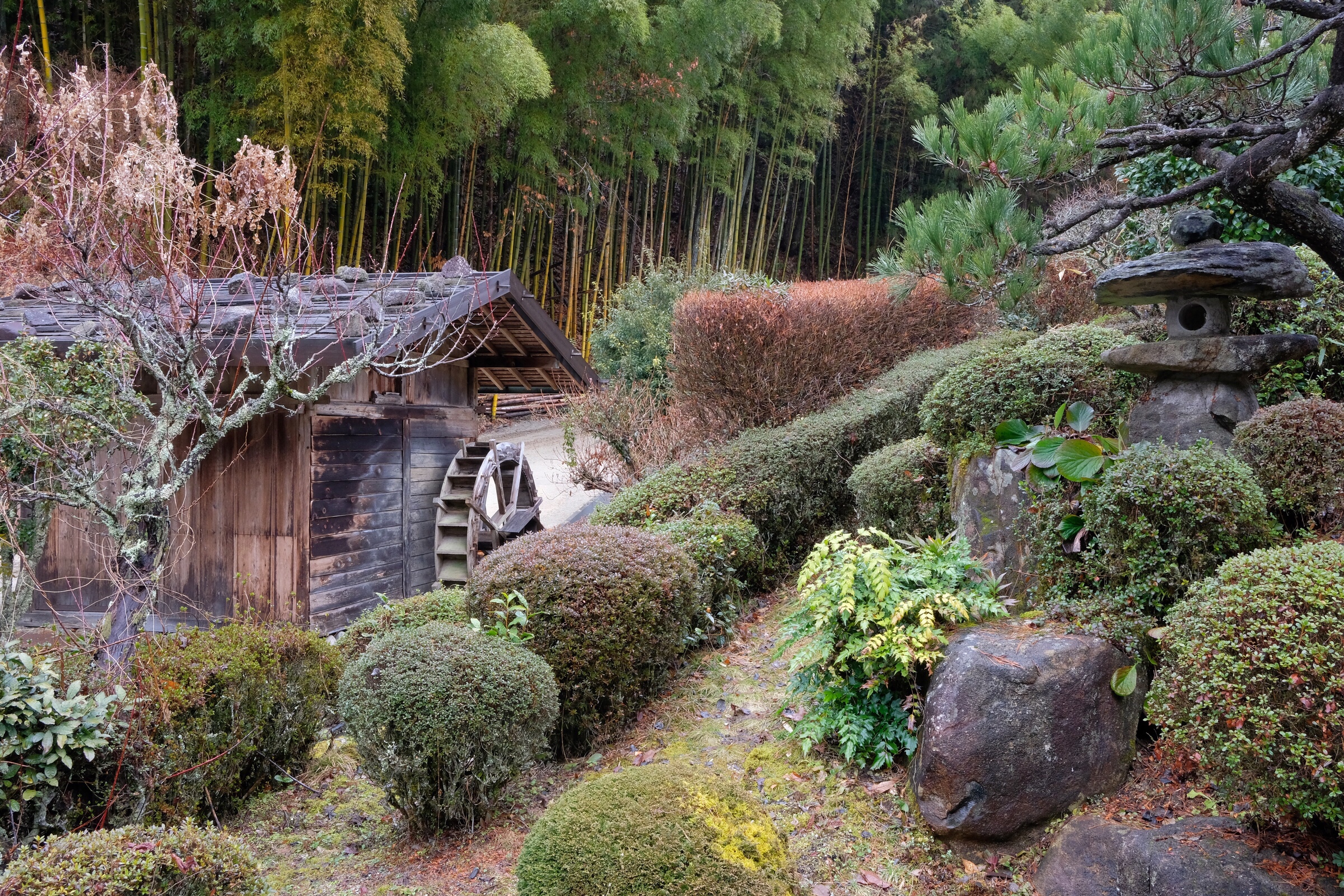
As we passed through a small village with a pretty shrine, Rowan said:
“I would like to live here. And then Neven could live beside us, and Charlotte and Emily, and Michael and Thomas could live here too. It would be really nice.”
I couldn’t agree more, little man.

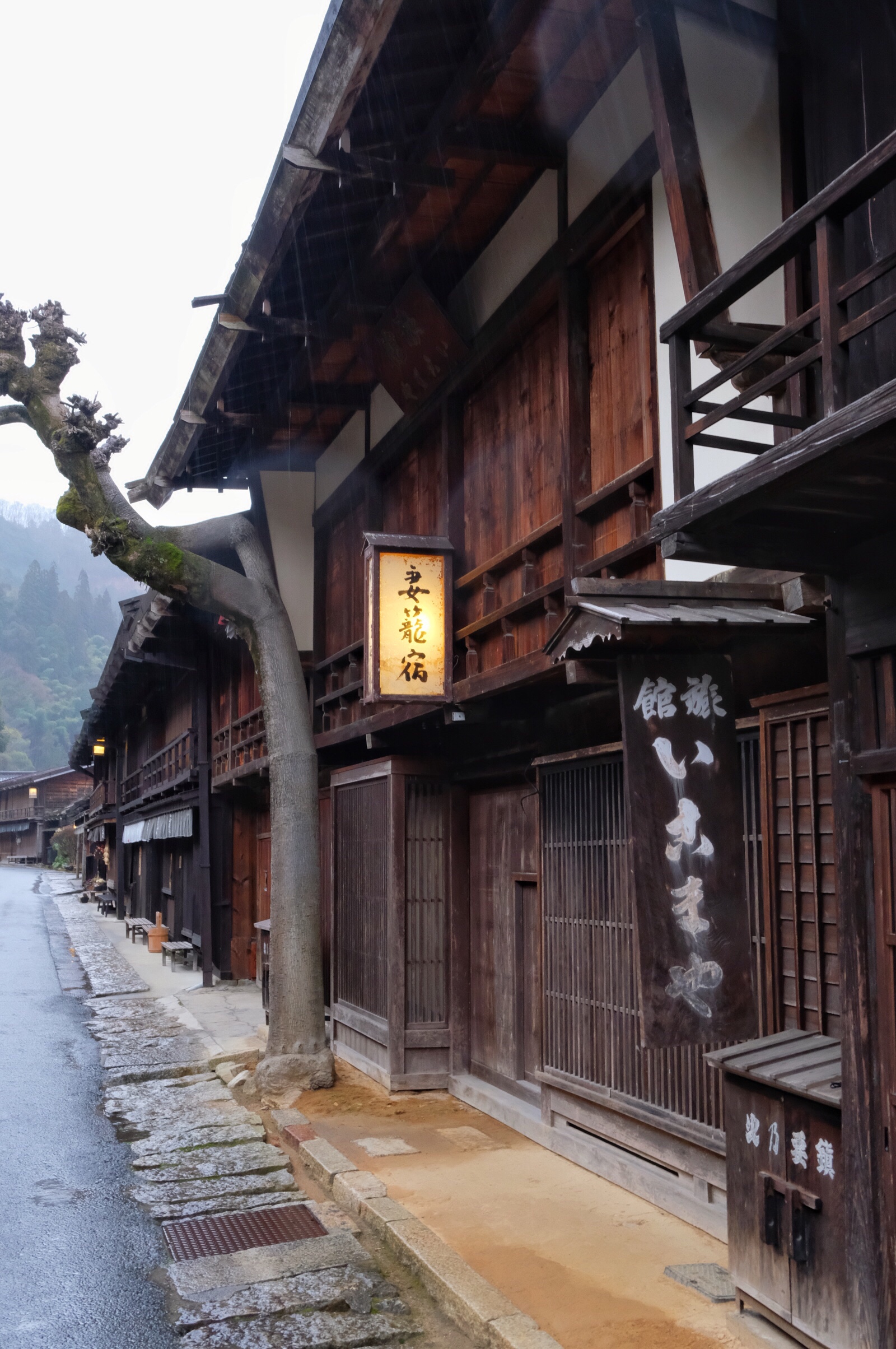
Leave a Reply